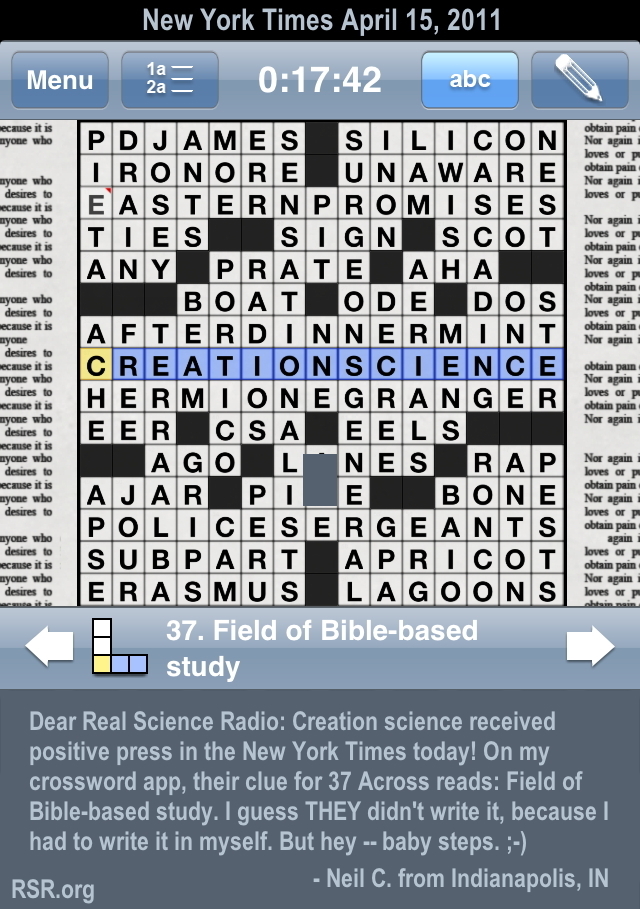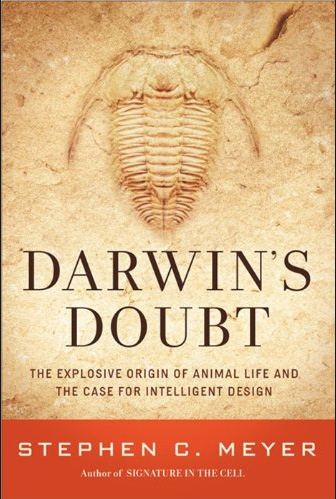Real Science Radio's Excerpts
from the WMAP & Planck Anisotropy of the Universe Papers
with a little help from New Scientist
aka The Big Bang Theory Goes Ker-Planck
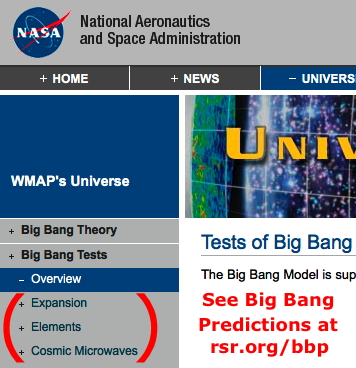 * The CMB, NASA's Top 3 Proofs, RSR's #1 Ranking: [Updated in 2018] NASA ranks the CMB (cosmic microwave background) among the top three confirmations of the big bang predictions. (See or click the image, right.) Yet Google ranks rsr.org/bbp #1 among the millions of results for a search on: big bang predictions! So, who's correct in this standoff? NASA? Or Google and RSR? To decide, you can:
* The CMB, NASA's Top 3 Proofs, RSR's #1 Ranking: [Updated in 2018] NASA ranks the CMB (cosmic microwave background) among the top three confirmations of the big bang predictions. (See or click the image, right.) Yet Google ranks rsr.org/bbp #1 among the millions of results for a search on: big bang predictions! So, who's correct in this standoff? NASA? Or Google and RSR? To decide, you can:
- check out today's RSR program on the CMB and the Axis of Evil, or
- see Part II of our BB video (just below), or
- hear our broadcast and/or read our article at rsr.org/bbp.
Summary: The belief, held by faith by many cosmologists, that God did not create the universe suggests, as codified in their Copernican and Cosmological principles, claims that the Earth is not in a special place. If however, the most expansive scientific observations ever made demonstrate that the universe has, in effect, a north and a south pole, aligned in an uncanny way with the Earth's orbit around the sun, then that would suggest that when God created the heavens and the Earth, that He put the Earth in a special place. Thus, atheistic cosmologists have coined the term Axis of Evil because in their upside down worldview, anything is evil if it is evidence against the big bang and for the God of the Bible.
Click Play for RSR's BB Part 2 on the three main predictions...
* First – The BIG NAMES in Cosmology and Physics Admit It's Philosophy: Stephen Hawking, Richard Feynman, Edwin Hubble, George Ellis, and so many other accomplished scientists admit that it is not observational science, but philosophy, that leads such big bang advocates to claim that the universe has no center (and thus that it is homogenous and isotropic, the same everywhere and in every direction). If you don't know that, read their quotes at rsr.org/cosmological-prinicple. If you've read their comments, and you are still in denial about this, ask God to help you, and He will. Meanwhile, the rest of us may proceed...
* Second – Another Big Name Admits What the CMB Data Seems to Show: Theoretical physicist Lawrence Krauss (emphasis on the theoretical), put it this way:
But when you look at CMB map, you also see that the structure that is observed, is in fact, in a weird way, correlated with the plane of the earth around the sun. Is this Copernicus coming back to haunt us? That's crazy. We're looking out at the whole universe. There's no way there should be a correlation of structure with our motion of the earth around the sun — the plane of the earth around the sun — the ecliptic. That would say we are truly the center of the universe. The new results are either telling us that all of science is wrong [RSR: That's extreme hyperbole; No operational science would be wrong, only the typical wild guesswork of origins science would be wrong] and we're the center of the universe, or maybe the data is simply incorrect, or maybe it's telling us there's something weird about the microwave background results and that maybe, maybe there's something wrong with our theories on the larger scales.
* Third – WMAP PROJECT (2001 – 2013): This mission was the result of a partnership between Princeton University and the NASA Goddard Space Flight Center and later the ESA Planck spacecraft (2009 – 2013) complemented and greatly enhanced the Wilkinson Microwave Anisotropy Probe (WMAP) mission to map the CMB. As stated on an official Planck site, "Planck data reveals the presence of subtle anomalies in the CMB pattern that might challenge the very foundations of cosmology."
* The CMB Segment of our BB Video Queued Up: In case you didn't watch Part 2 of RSR's BB video just above, at least check out the CMB segment that's queued up here. Just click...
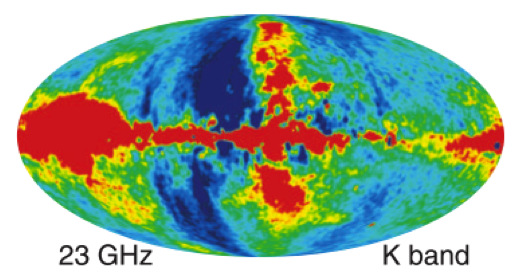 * Post-show Updates: Unexpectedly, NASA's Voyager 1 & 2, having now both crossed the heliopause and left the solar system as of 2018, have both found, separately, that the solar system's north is aligned with the north of interstellar space, and how this could be is "simply not understood." Separately, regarding the axis of evil, see creationist cosmologist Dr. John Hartnett's Cosmology is Not Even Astrophysics (the last paragraph) and his excellent 2006 article CMB Conundrums.
* Post-show Updates: Unexpectedly, NASA's Voyager 1 & 2, having now both crossed the heliopause and left the solar system as of 2018, have both found, separately, that the solar system's north is aligned with the north of interstellar space, and how this could be is "simply not understood." Separately, regarding the axis of evil, see creationist cosmologist Dr. John Hartnett's Cosmology is Not Even Astrophysics (the last paragraph) and his excellent 2006 article CMB Conundrums.
* New Scientist: Planck shows... axis of evil: This article by Jacob Aron reviews the latest science on the mapping of the cosmic microwave background (CMB). The title of the article is Planck shows almost perfect cosmos – plus axis of evil. It's about:
… a four-year mission conducted by the European Space Agency's Planck spacecraft, which has created the highest-resolution map yet of the entire cosmic microwave background (CMB)… Planck's map greatly improves cosmologists' understanding of the universe, but it does not solve lingering mysteries over unusual patterns in the CMB. These include a "preferred" direction in the way the temperature of the light varies, dubbed the cosmic "axis of evil"…
The high-resolution results from Planck show very strong agreement with cosmological theory. 'The overall conclusion is that standard cosmology is an extremely good match to Planck data,' said Cambridge astrophysicist George] Efstathiou. 'If I were an inflationary theorist I would be extremely happy.'
Cosmologists can't pack up and go home just yet though, as Planck's map has also confirmed the presence of a mysterious alignment of the universe. [RSR: Seems like they are committing a rsr/org/ReMineism.] The "axis of evil" was identified by Planck's predecessor, NASA's Wilkinson Microwave Anisotropy Probe…
The pattern of hot and cold variations in the CMB should be randomly distributed – and they are when comparing small patches of the universe. At larger scales, however, Planck reveals that one half of the universe has bigger variations than the other. Planck's detectors are over 10 times more sensitive and have about 2.5 times the angular resolution of WMAP's, giving cosmologists a much better look at this alignment. "We can be extremely confident that these anomalies are not caused by galactic emissions and not caused by instrumental effects, because our two instruments see very similar features," said Efstathiou.
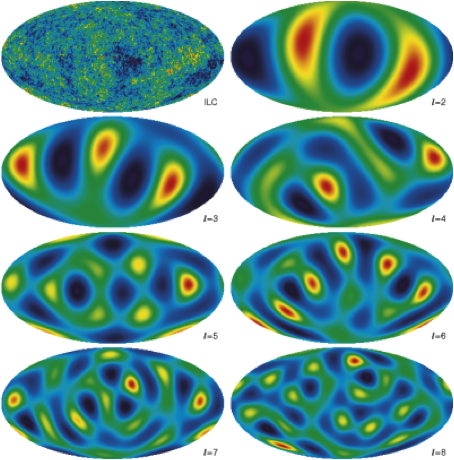 * CMB Map Resolution Improvement Since 1992: Wow! Via Planck.
* CMB Map Resolution Improvement Since 1992: Wow! Via Planck.
arXiv Aug. 19, 2013 Dipole Anisotropy in Integrated Linearly Polarized Flux Density in NVSS Data
Department of Physics, Indian Institute of Technology, Kanpur - 208016, India
There currently exists considerable evidence in favor of a large scale anisotropy in the Universe with the preferred axis pointing roughly in the direction of Virgo, close to the CMBR dipole [that is, within margins of error, which dipole itself is much larger than expected by the Doppler effect]. Furthermore it seems very unlikely that systematic effects would pick the same direction in so many different observations, i.e. radio polarizations orientations (Jain & Ralston 1999), optical polarizations (Hutsemekers 1998), CMBR quadrupole and octopole (de Oliveira-Costa et al. 2004), radio number counts (Blake & Wall 2002; Singal 2011) and radio polarization flux (present work). In all likelihood this alignment of axes (Ralston & Jain 2004) is caused by a physical effect.
(Tiwari and Jain, 2013, pp. 1, 13)
arXiv Aug. 8, 2013: Testing the Dipole Modulation Model in CMBR
Department of Physics, Indian Institute of Technology, Kanpur - 208016, India, Pranati K. Rath and Pankaj Jain
…there are several observations which suggest a preferred axis pointing roughly towards Virgo [1–6]. One also observes a hemispherical anisotropy [7–13], where the power extracted from two different hemispheres shows significant difference from one another. The power in each hemisphere is estimated by making a harmonic decomposition of the masked sky. … This direction is nearly perpendicular to the direction towards Virgo. These observations suggest a violation of the cosmological principle… the hemispherical anisotropy found in [7–12] cannot be consistently attributed to the dipole modulation model, Eq. 1.1. The true anisotropy model is likely to be more complicated and might contain higher order multipoles.
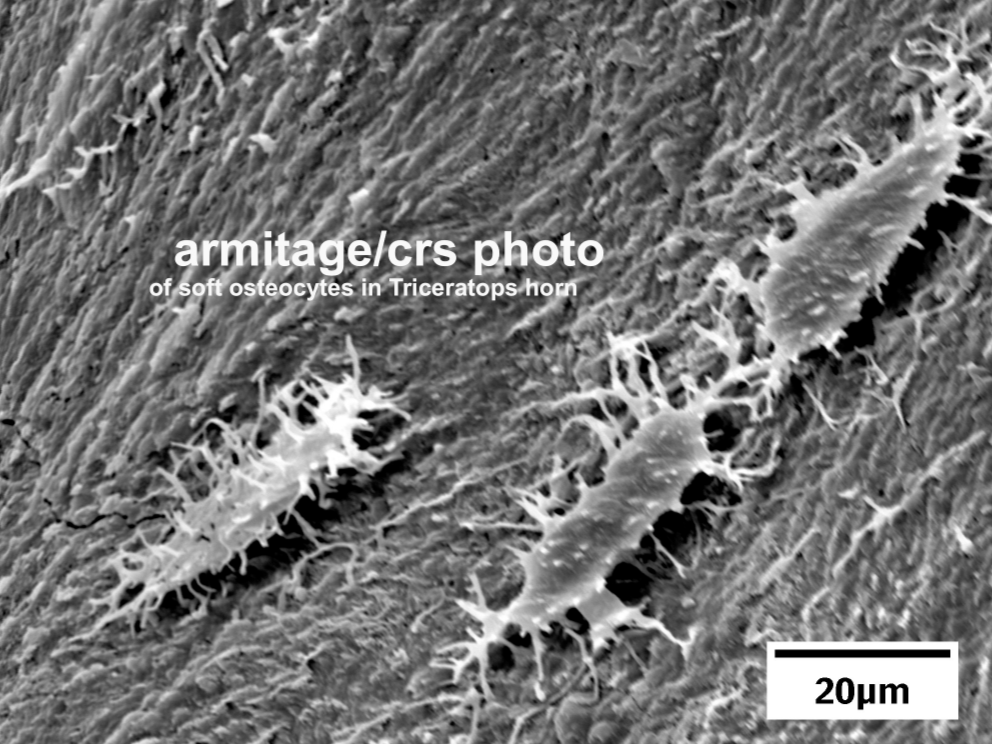 * Interview & Photo from iDINO's Mark Armitage: Fulfilling last year's promise, Mark Armitage of the CRS iDINO project presents Real Science Radio with a formerly unpublished photo (right) of soft tissue in a Triceratops horn. It's beautiful! (Well, in the eyes of the beholder, anyway. But God Himself probably thinks it's pretty cool too!) Armitage, a Creation Research Society board member and microscopy expert, along with iDINO microbiologist Dr. Kevin Anderson, excavated a Triceratops horn from the Hell Creek Formation in Montana. As with scientists from Harvard, North Carolina State, and dozens of other universities and institutions, they broke it open and... Guess what!
* Interview & Photo from iDINO's Mark Armitage: Fulfilling last year's promise, Mark Armitage of the CRS iDINO project presents Real Science Radio with a formerly unpublished photo (right) of soft tissue in a Triceratops horn. It's beautiful! (Well, in the eyes of the beholder, anyway. But God Himself probably thinks it's pretty cool too!) Armitage, a Creation Research Society board member and microscopy expert, along with iDINO microbiologist Dr. Kevin Anderson, excavated a Triceratops horn from the Hell Creek Formation in Montana. As with scientists from Harvard, North Carolina State, and dozens of other universities and institutions, they broke it open and... Guess what!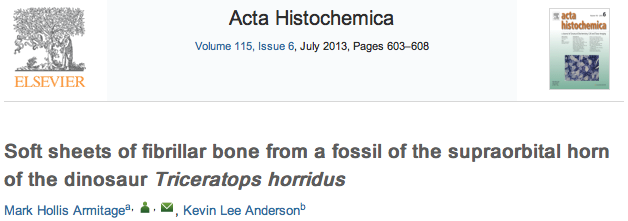
 * Armitage Compliments the RSR Dino Soft Tissue Page: Mark Armitage complimented our DinosaurSoftTissue.com listing as the web's most complete catalog of peer-reviewed journal papers confirming the existence of original biological tissue from dinosaurs!
* Armitage Compliments the RSR Dino Soft Tissue Page: Mark Armitage complimented our DinosaurSoftTissue.com listing as the web's most complete catalog of peer-reviewed journal papers confirming the existence of original biological tissue from dinosaurs!


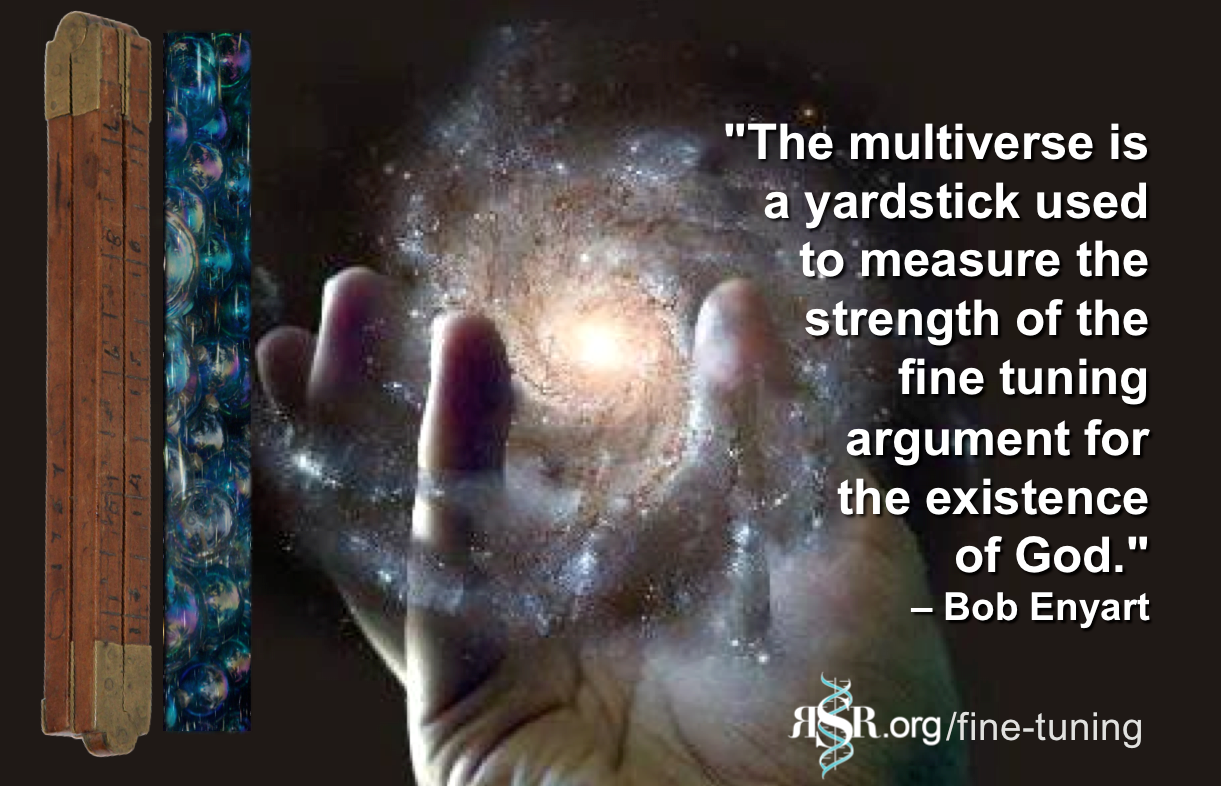
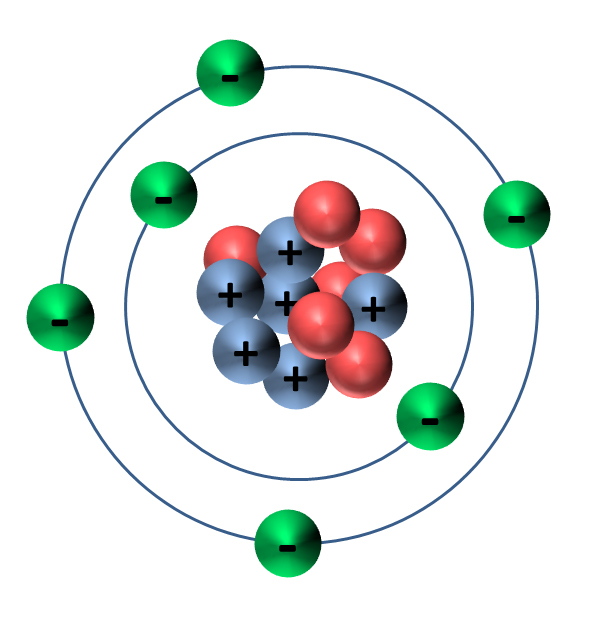 the phenomenally harmonious water cycle
the phenomenally harmonious water cycle [Updated July 1, 2021.]
[Updated July 1, 2021.] * Three in Nature: God has imprinted our world and even ourselves with His triune nature.
* Three in Nature: God has imprinted our world and even ourselves with His triune nature.  * Too Many Bills: Bob Enyart relates his appearances on Bill Maher's Politically Incorrect while reporting on Maher's recent conversation with Bill Nye in which they lie about Christians to convince their ignorant audience of a revisionist history.
* Too Many Bills: Bob Enyart relates his appearances on Bill Maher's Politically Incorrect while reporting on Maher's recent conversation with Bill Nye in which they lie about Christians to convince their ignorant audience of a revisionist history.

 * CMB Map Resolution Improvement Since 1992: Wow!
* CMB Map Resolution Improvement Since 1992: Wow! 


